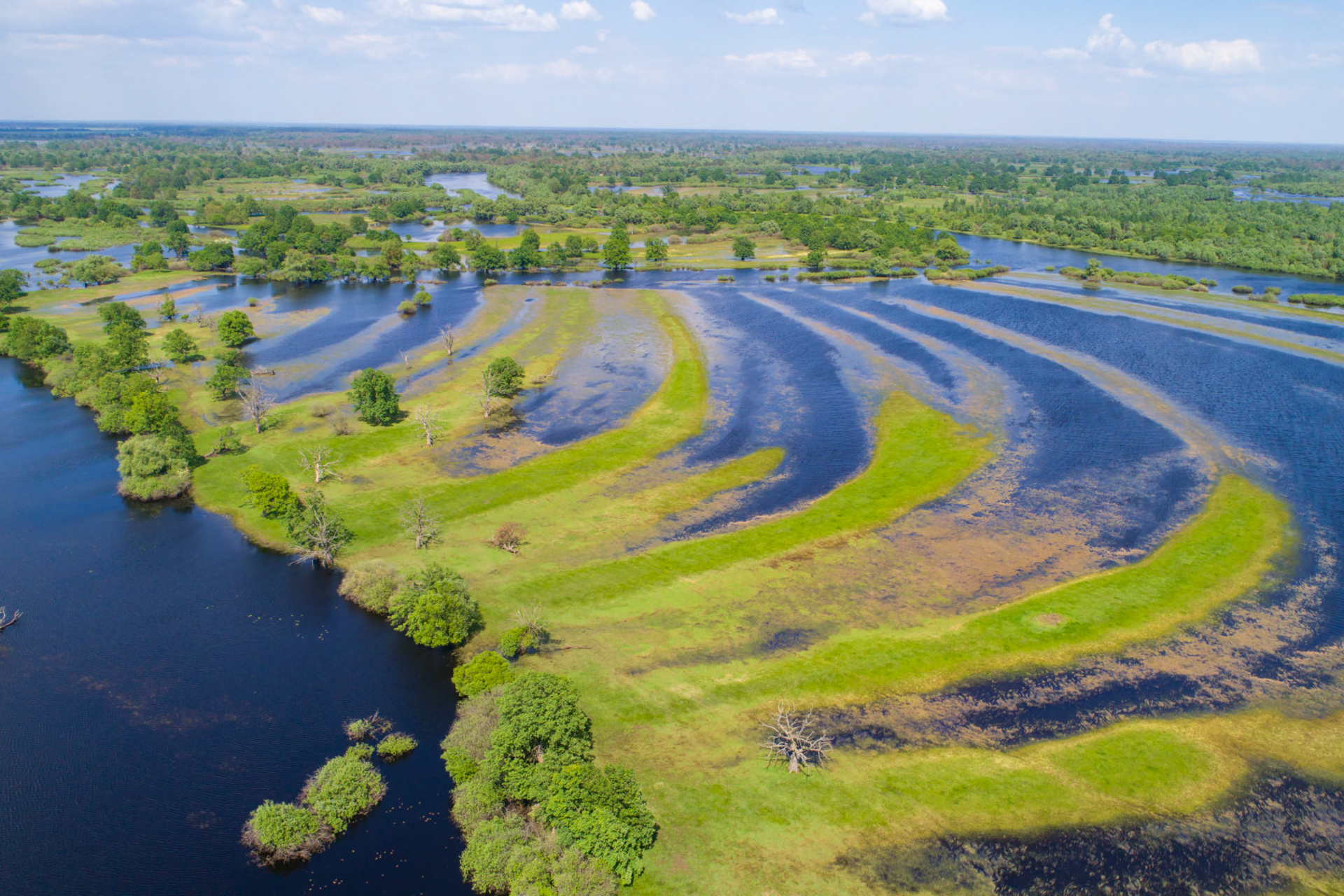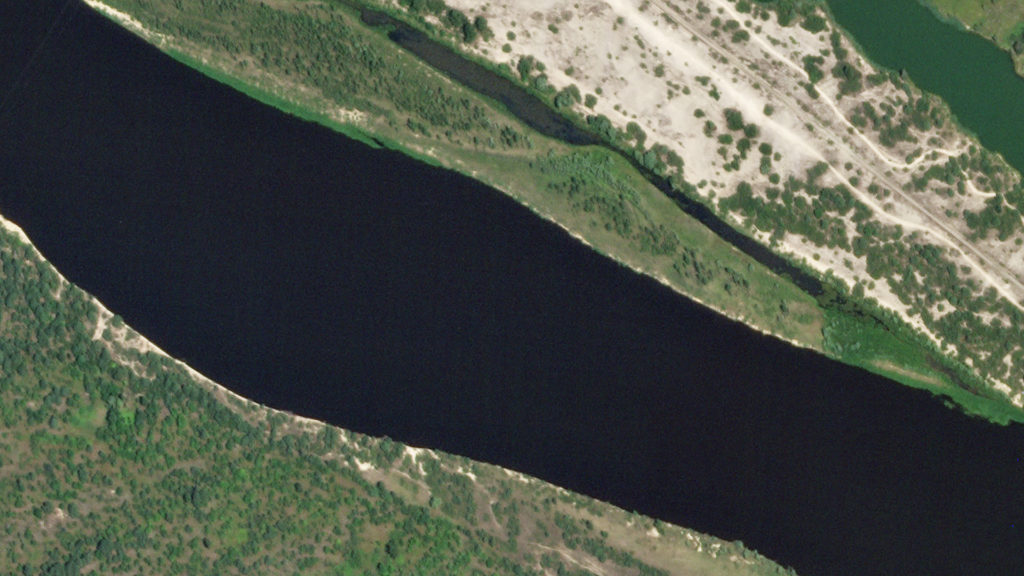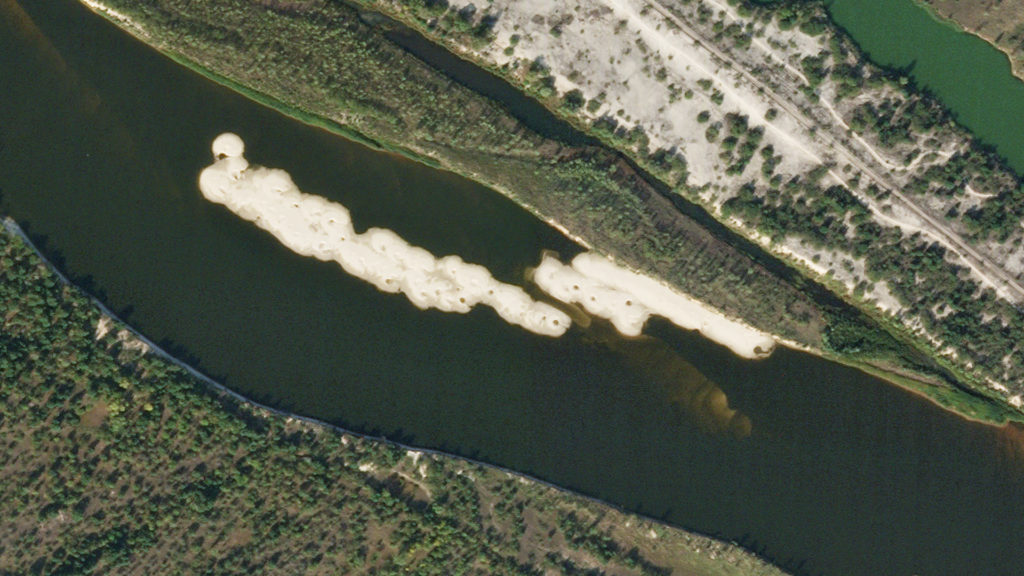An article released in the Guardian today highlights the serious lack of proper risk assessments for the proposed E40 waterway. As yet, a strategic environmental assessment has not been undertaken for the 2000km-long, mega-infrastructure project spanning Poland, Belarus and Ukraine. Despite this, dredging as part of its construction has already been launched in Ukraine’s Chernobyl exclusion zone. While in Poland the construction of the Siarzewo Dam on the Vistula – one of more than 13 planned as part of the E40 waterway construction – appears to be moving forward.
Dredging of Pripyat river in Ukraine completed
Satellite imagery shows that dredging along the Pripyat – one of the last free-flowing rivers in Europe – has taken place at at least seven locations within the Chernobyl exclusion zone since July this year. The purpose of the dredging works was to deepen the river beds to a navigable depth of 1.6 metres and width of 35 metres. Five of these sites lie within 10kms of the Chernobyl nuclear reactor. The International Atomic Energy Association (IAEA) recommends leaving contaminated sediments undisturbed. This year’s dredging disregarded these recommendations and also broke the Law in Ukraine by carrying out this work without an appropriate Environmental Impact Assessment.
Plans for E40 waterway moving forward in Poland
The Polish government also seems to be moving forward with plans for the construction of the Siarzewo dam on the Vistula. This is one of 13 to 15 dams that would need to be constructed along the river to make the E40 waterway passable for larger vessels. In addition, the country has launched a second feasibility study to reassess the waterway’s route through Poland.
The Polish and Belarussian parts of the E40 waterway would be the most expensive, with estimates for the cost of the entire programme at more than €13 billion. Experts suggest that significant financial risks are involved, with a major underestimation of cost in the E40 waterway’s 2015 feasibility study.
Catastrophic impacts on biodiversity
If the E40 waterway plans go ahead, it would impact 60 internationally important wildlife sites and would have a catastrophic impact on biodiversity. One and a half million migratory birds visit Polesia each year, the area is a crucial stopover and feeding ground for these migrants. Polesia is also an important breeding ground for endangered species like the Greater Spotted Eagle and Aquatic Warbler, and harbours healthy populations of large mammals like lynx, bison and wolves.
Proper risk assessments lacking for the planned E40 waterway. Has the 2000km-long, mega-infrastructure project spanning Poland, Belarus and Ukraine been properly thought through? #Stop_E40 #savePolesia
Tweet
*Top image is an aerial photo of the Pripyat River and its surrounding floodplain meadows, wetlands and oxbow lakes. © Daniel Rosengren
ADDITIONAL INFORMATION:
- Read the full Guardian article here.
- Read the previous Guardian article on Polesia (published in March 2020) here.



